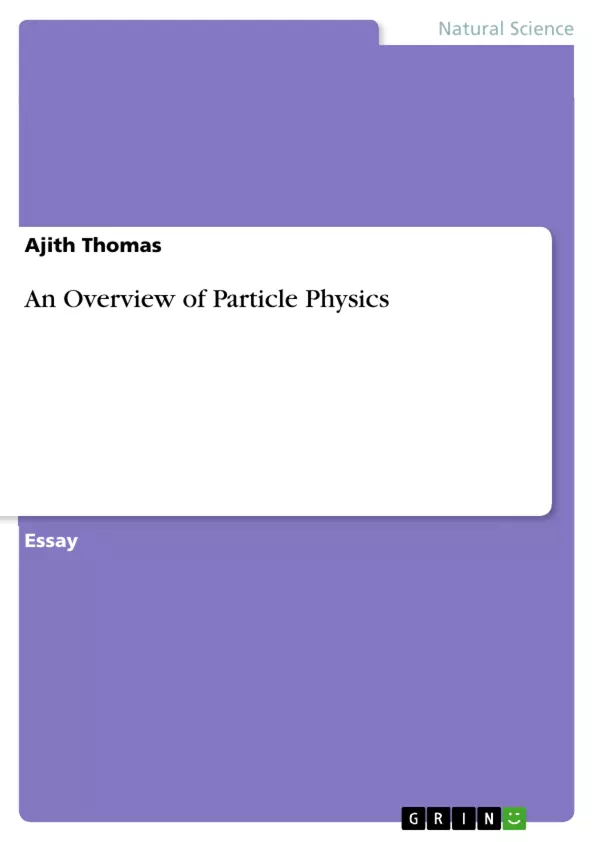One of the prominent research areas, which have gained a lot of attention of the scientific community as well as that of the general public is the study of the basic structure of matter. ‘Elementary particle physics’ as it is called is a balancing act of theoretical predictions and experimental confirmations.The widespread attention and media coverage on the latest discoveries which are being announced frequently by CERN, the best particle physics study centre in the world, is undoubtedly due to the inherent interest and curiosity of human beings to understand the framework of the world they are in. This book provides an overview of the things that are going on in the micro world, to an audience who may not be specialised in science, but are interested in understanding the study of ‘matter’ with a little effort. Special emphazis is given to ‘ particle accelarators’ section, which is the practical side of particle physics research.
Inhaltsverzeichnis (Table of Contents)
- INTRODUCTION
- NUCLEAR COMPOSITION
- Fudamental Interactions and associated particles
- Classes of elementary particles
- Leptons
- Hadrons
- Quarks
- The Standard Model
- The Higgs boson
- Dark Matter
- PARTICLE ACCELARATORS
- Future of particle Physics Research
Zielsetzung und Themenschwerpunkte (Objectives and Key Themes)
This book provides a comprehensive overview of the field of particle physics, aiming to explain the basic structure of matter to a non-specialist audience. It explores the fundamental interactions and particles that govern the universe, highlighting the role of particle accelerators in research.
- The composition of the atomic nucleus, including protons, neutrons, and isotopes
- The four fundamental forces of nature: strong, electromagnetic, weak, and gravitational
- The classification of elementary particles, including leptons and hadrons
- The Standard Model of particle physics and the role of the Higgs boson
- The concept of dark matter and its implications for our understanding of the universe
Zusammenfassung der Kapitel (Chapter Summaries)
- Introduction: This chapter introduces the field of particle physics as a blend of theoretical predictions and experimental confirmations. It highlights the importance of particle accelerators in research and aims to provide a general understanding of the micro-world for non-specialists.
- Nuclear Composition: This chapter explores the constituents of the atomic nucleus, including protons, neutrons, and isotopes. It describes the strong force that binds these particles together and explains the concept of atomic and mass numbers.
- Fudamental Interactions and associated particles: This chapter introduces the four fundamental forces in the universe: strong, electromagnetic, weak, and gravitational. It explains how these forces result from interactions between particles and the exchange of other particles, with a focus on the properties of each force and its role in the universe.
Schlüsselwörter (Keywords)
This book focuses on the key concepts of particle physics, including elementary particles, fundamental interactions, the Standard Model, particle accelerators, and dark matter. It explores the theoretical and experimental advancements in this field, offering insights into the building blocks of the universe and the forces that govern their behavior.
- Citation du texte
- Ajith Thomas (Auteur), 2014, An Overview of Particle Physics, Munich, GRIN Verlag, https://www.grin.com/document/283818



